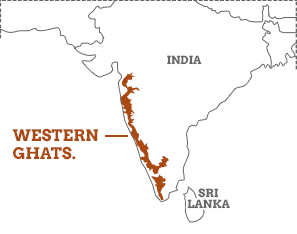How do plate tectonics explain the distribution of earthquakes and volcanic activities around the world?
Soil formation, or pedogenesis, is a complex process that involves the physical and chemical weathering of rocks and the decomposition of organic matter. This process occurs over long periods and is influenced by several factors: Parent Material: The type of rock from which the soil is derived playsRead more
Soil formation, or pedogenesis, is a complex process that involves the physical and chemical weathering of rocks and the decomposition of organic matter. This process occurs over long periods and is influenced by several factors:
- Parent Material: The type of rock from which the soil is derived plays a significant role in determining its mineral composition and texture. Different parent materials weather at different rates and influence the initial stages of soil development.
- Climate: Temperature and precipitation are critical in soil formation. Warm, wet climates accelerate chemical weathering and organic matter decomposition, leading to deeper and more developed soils. In contrast, cold or arid climates slow these processes, resulting in thinner soils.
- Organisms: Plants, animals, and microorganisms contribute to soil formation by adding organic matter and facilitating the breakdown of minerals. Roots help in breaking up parent material, while microorganisms decompose organic matter, enriching the soil with nutrients.
- Topography: The landscape’s slope and orientation affect drainage and erosion. Soils on steep slopes may be thinner due to erosion, while those in depressions may be thicker and more fertile due to the accumulation of materials.
- Time: Soil formation is a gradual process that can take thousands of years. The longer the soil has been forming, the more developed it becomes, with distinct horizons (layers) that indicate various stages of development.
- Human Activity: Agricultural practices, deforestation, and urbanization can significantly alter soil formation processes by changing land use, affecting erosion rates, and introducing pollutants.
Factors Influencing Soil Development in Different Regions
- Tropical Regions: High temperatures and heavy rainfall lead to intense chemical weathering and leaching of minerals, often resulting in nutrient-poor soils. However, the rapid decomposition of organic matter can maintain soil fertility in undisturbed areas.
- Temperate Regions: Moderate climate conditions promote balanced physical and chemical weathering. These regions often have fertile soils with well-defined horizons, suitable for diverse agricultural activities.
- Arid and Semi-Arid Regions: Limited precipitation slows down chemical weathering and organic matter decomposition, leading to thin, rocky, and often saline soils with low fertility.
- Polar Regions: Low temperatures and permafrost conditions inhibit soil formation, resulting in shallow, poorly developed soils with limited biological activity.
Significance of Soil Composition for Agriculture and Ecosystem Health
- Agriculture: Soil composition determines its fertility, water-holding capacity, and suitability for different crops. Key components include:
- Mineral Content: Essential nutrients like nitrogen, phosphorus, and potassium are crucial for plant growth.
- Organic Matter: Improves soil structure, water retention, and nutrient availability.
- Soil pH: Affects nutrient solubility and microbial activity. Most crops prefer a slightly acidic to neutral pH.
- Texture: Influences aeration, drainage, and root penetration. A balance of sand, silt, and clay (loam) is ideal for most crops.
- Ecosystem Health: Healthy soils support diverse ecosystems by:
- Nutrient Cycling: Decomposing organic matter releases nutrients that are essential for plant growth.
- Water Filtration: Soils filter and purify water, removing contaminants and replenishing groundwater supplies.
- Habitat: Provide habitat for a wide range of organisms, from microorganisms to larger soil fauna, which contribute to ecosystem stability and resilience.
- Carbon Storage: Soils act as a significant carbon sink, helping to mitigate climate change by storing organic carbon.
In conclusion, soil formation is influenced by multiple factors, including parent material, climate, organisms, topography, time, and human activity. Understanding these factors is crucial for effective soil management and conservation, ensuring agricultural productivity and ecosystem health.


Plate tectonics provide a comprehensive explanation for the global distribution of earthquakes and volcanic activities. Here's how plate tectonics theory explains these phenomena: Plate Boundaries: Most earthquakes and volcanic eruptions occur at the boundaries between Earth's tectonic plates. At coRead more
Plate tectonics provide a comprehensive explanation for the global distribution of earthquakes and volcanic activities. Here’s how plate tectonics theory explains these phenomena:
- Plate Boundaries:
- Most earthquakes and volcanic eruptions occur at the boundaries between Earth’s tectonic plates.
- At convergent plate boundaries, where two plates collide, one plate typically subducts (or is pushed) under the other, leading to intense seismic and volcanic activity along the subduction zone.
- At divergent plate boundaries, where plates are moving apart, molten magma rises to fill the gap, creating mid-ocean ridges and volcanic activity.
- Transform plate boundaries, where plates slide past each other, also experience significant earthquake activity.
- Subduction Zones:
- At subduction zones, the downgoing plate is subjected to intense stress and friction, generating deep earthquakes as the plate bends and descends into the Earth’s mantle.
- The melting and dehydration of the subducting plate also leads to the formation of volcanoes in the overlying plate, creating volcanic arcs like the Pacific Ring of Fire.
- Mid-Ocean Ridges:
- At mid-ocean ridges, where plates are moving apart, new oceanic crust is continuously being formed, generating a high level of seismic activity along the ridge axis.
- Volcanic activity is also common at mid-ocean ridges, as magma wells up to fill the gap between the diverging plates.
- Transform Faults:
- Transform faults, where plates slide past each other, experience significant earthquake activity due to the stresses and friction along the fault line.
- While transform faults are not typically associated with volcanic activity, they can sometimes be the site of limited volcanic eruptions.
- Intraplate Regions:
- Although most earthquakes and volcanoes are concentrated at plate boundaries, some seismic and volcanic activity can also occur within the interior of tectonic plates, known as intraplate regions.
- These intraplate events are often associated with hotspots, mantle plumes, or other geological phenomena that can cause localized volcanic and seismic activity.
See less